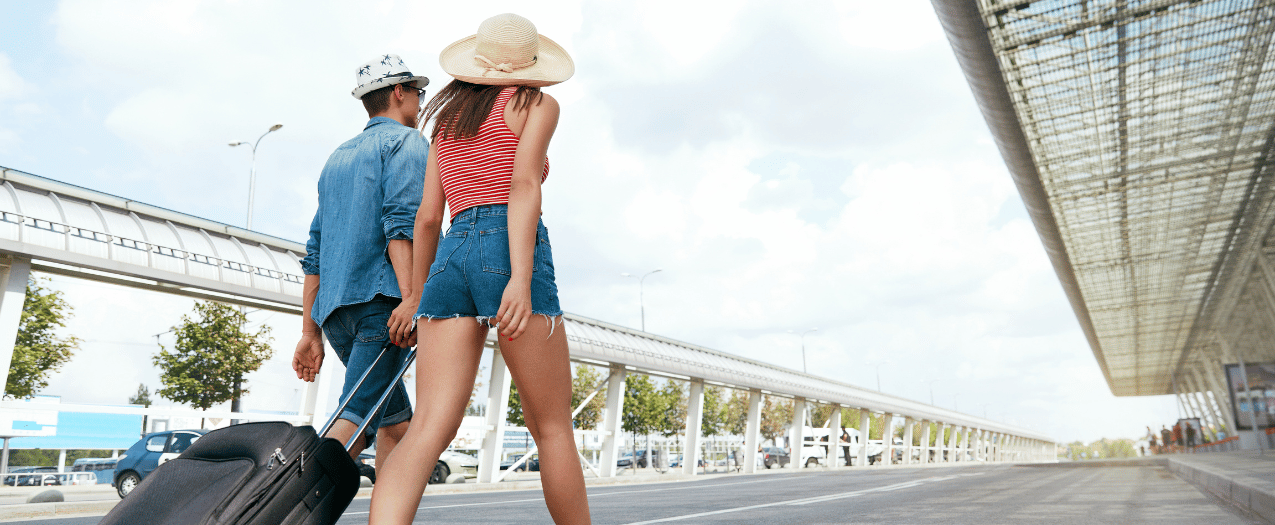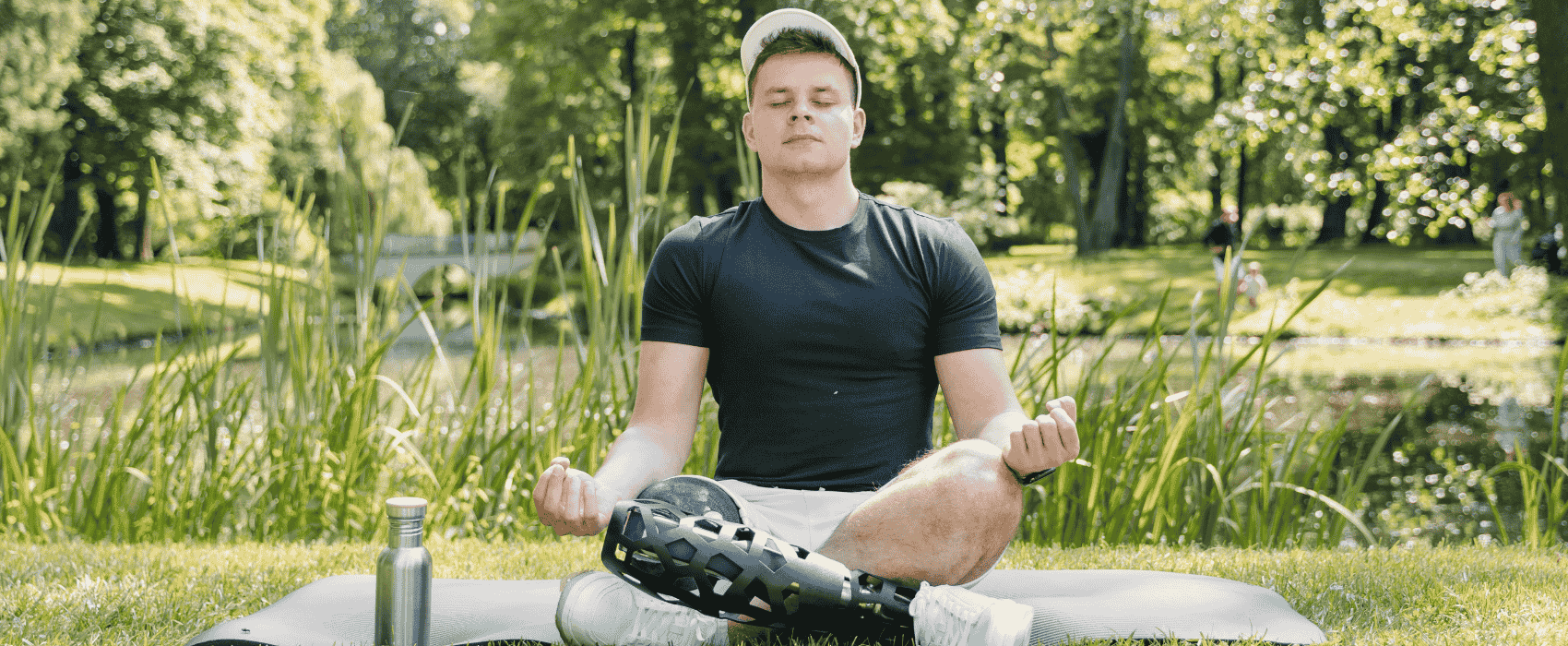
Traveling is one of life's greatest joys, but for those managing urinary incontinence, it can bring a degree of stress and uncertainty. However, you can still enjoy the excitement of new destinations regardless of whether you experience urine leakage. The key is doing a bit of preparation and planning. Below are some of the most important recommendations for traveling with incontinence.
Take Time to Prepare for Your Trip
Before taking off on your next journey, it's important to take the time to prepare. Practicing techniques to help manage incontinence, like bladder training, can help get your body ready, while doing some research can calm some potential anxiety. So, use the following checklist to kickstart your travel research.
Talk to Your Doctor
Even though it might seem redundant, it's a good idea to talk to your doctor before traveling, especially if this is your first trip away with incontinence or you're heading to an international destination. They may recommend medication to reduce urgency or frequency and provide personalized advice based on your condition. Your doctor can also help you determine what supplies to bring and how to adjust any treatment routines while away from home.
Choose the Best Time to Travel
Some individuals experience worsened UI symptoms during the middle of the day or afternoon, while others deal with consistent dribbling. If you notice your symptoms tend to be more manageable at certain times of day, plan your travel accordingly. Early morning or midweek flights and drives often mean fewer crowds and quicker restroom access. Building extra time into your itinerary can also help reduce stress and give you flexibility in case of delays or unexpected stops.
Research Different Destinations
Some destinations are more accommodating to individuals with incontinence than others. Choose places with reliable restroom access, modern amenities, and easy transportation. If you're considering international travel, check on healthcare accessibility and whether your incontinence supplies are available locally, just in case you run low. You don't have to eliminate places that aren't so accessible, but maybe save them for a time you feel more experienced traveling with incontinence.
Learn About Bathroom Availability
Knowing where restrooms are located along your route and destination can be a huge stress reliever. Luckily, public toilet finder apps exist! Apps like Flush or SitOrSquat can help you locate bathrooms on the go, and many airports and public areas have digital maps available online. If you’re driving, mark rest stops in advance.
Practice Urge Suppression
Urge impression techniques can also help you gain enough time to go to the bathroom in a foreign place. Learning techniques like deep breathing, distraction, or pelvic floor exercises can help you manage sudden urges, especially when the anxiety from being away from home contributes to UI. Practicing these methods ahead of time helps build confidence and makes them easier to rely on during travel.
Train Your Bladder
Bladder training can also help extend the time between bathroom visits. Gradually increasing the interval between urinations (under your doctor’s supervision) may help reduce frequency and improve control, giving you more freedom during your trip. Start slowly and work your way up. Although it can take time, many individuals find bladder training helpful.
Learn Some Local Phrases
Learning simple phrases like “Where is the bathroom?” in the local language can be incredibly helpful when traveling abroad. Carrying a small phrasebook or using a translation app can ensure you’re prepared if you need to ask for help.
Pack Your Essential Incontinence Products
Whether traveling with an overactive bladder or incontinence, it's important to have your favorite products on hand for urinary leakage. You don't need to fill up an entire suitcase with incontinence pads, but having a few absorbency products on hand can help you feel confident throughout the day. Some of the most important incontinence-related things to put in your suitcase include:
Travel Hygiene Kit
Nothing's worse than finding a bathroom, only to realize it's a cesspool of germs. Create a compact kit with cleansing wipes, hand sanitizer, disposable gloves, and tissues or toilet paper. Keep this kit in your carry-on or an easily accessible spot to freshen up on the go.
Absorbent Products
Bring more incontinence products (i.e., pads, liners, or protective briefs) than you think you’ll need. It's better to be overprepared, especially if you’re unsure if the same products will be available at your destination. Consider travel-specific products that are thin, comfortable, and designed for long-term wear.
Waterproof Bedding or Seat Covers
Although not necessarily the most important things to pack, these can be helpful for long flights, drives, or overnight hotel stays. Disposable or reusable covers protect your bedding and car seats, offering peace of mind and reducing the risk of uncomfortable or embarrassing situations.
Medications
Don’t forget to pack any prescribed or over-the-counter medications related to incontinence. Always carry them in your hand luggage in case your checked baggage is delayed. You should also include a list of medications and dosages if you need a refill abroad.
Documentation
If you’re flying, a doctor’s note explaining your medical condition and the need for specific supplies (like large volumes of liquid medication or absorbent products) can help you get through airport security more smoothly. Store this note with your travel documents.
General Tips for Traveling With Urinary Incontinence
Whether boarding a plane, hitting the road, or exploring a new city on foot, a few strategies can make your travel experience more comfortable and stress-free. While incontinence may add an extra layer of planning, it doesn't have to limit your adventures. Here are some tips to help you feel more confident and in control during your trip.
Consider Different Modes of Transportation
Traveling by plane, car, bus, or train all require different aspects of preparation. Here are a few tips based on each option:
Air Travel
- Choose an aisle seat near the restroom for easy access.
- Arrive early and use the restroom before boarding.
- Inform TSA if you're carrying medical supplies—they're trained to assist discreetly.
- Flight delays happen, so wear protective products and carry a change of clothes in your personal bag.
- Pre-board, if possible, so you can get settled before the cabin fills.
Personal Car Travel (Road Trips)
- Plan your route with bathroom stops in mind—state rest areas, gas stations, and fast-food restaurants are typically reliable.
- Bring a small cooler with water and bladder-friendly snacks to avoid dehydration.
- Keep your hygiene kit, supplies, and a change of clothes within reach.
- Use a waterproof seat cover to protect your car and keep you comfortable
Travel by Bus or Train
- Book a seat close to the restroom if possible.
- Check the route’s stop schedule so you can plan ahead.
- Bring a travel cushion or seat protector for comfort.
- Just like with other travel, keep supplies in an easy-to-reach bag and dress in layers for convenience.
Try to Establish a Routine
Try to maintain a routine similar to what you follow at home, especially regarding diet or meal times, hydration, and bathroom visits. Your body thrives on consistency, and this can help reduce unexpected urges.
Avoid Bladder Irritants
If you have any dietary triggers of urinary incontinence, try to avoid them while you're on your trip. These may include things like caffeinated beverages, alcohol, artificial sweeteners, and acidic foods, but everyone is different. Stick to water and bladder-friendly beverages to stay hydrated without triggering urgency. If you find a new food irritates your bladder, add it to your list and avoid it at the next restaurant.
Wear Adaptive Clothing
While no one likes to think about having an accident while on vacation, it's better to be prepared. Opt for dark, breathable clothing that’s easy to change if needed. Pants or skirts with elastic waists and layers can make bathroom trips quicker and more manageable. Finally, throw in a few extra outfits... just in case.
Don't Let Incontinence Limit Activities
You deserve to enjoy your trip to the fullest, and incontinence doesn't have to ruin that. Don’t avoid museums, tours, or restaurants out of fear. Do a little planning, wear the right protection, and know where restrooms are—then enjoy your adventure!
Learn to Manage Travel Anxiety
Worrying about leaks or finding restrooms can increase stress and make symptoms worse. Practice deep breathing, stay positive, and remind yourself that you're well-prepared. Traveling is about joy and discovery—don’t let anxiety steal that from you.
Travel With Understanding Companions
If you need to excuse yourself frequently or carry supplies, do so with confidence. Many people travel with medical needs, and there’s no shame in doing what you need to stay comfortable.
If possible, travel with someone who understands your condition and supports your needs. Having someone to help watch your bag, scout restrooms, or offer reassurance can make a huge difference in how relaxed you feel.
To help with incontinence care, partner with Byram Healthcare today.




